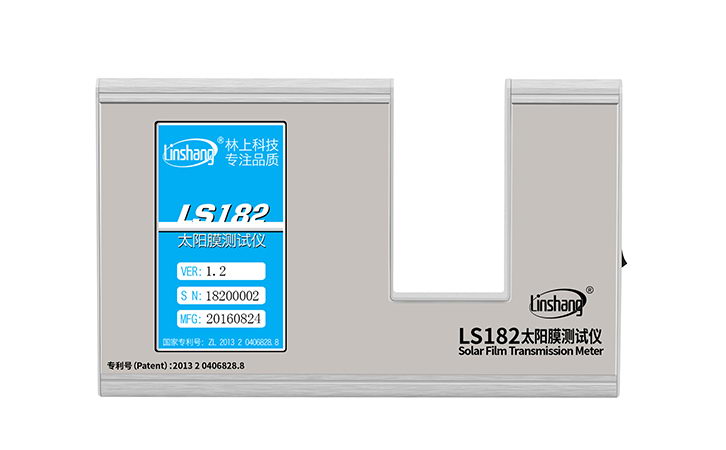Solar Spectrum Distribution and Solar Film Transmission Meter
When solar film transmission meter is produced, the solar spectrum cannot be perfectly simulated, only representative light source points can be selected for testing. Moreover, only the parameters of the optical properties of the solar film can be tested.
The sun is almost an ideal sphere intertwined with thermal plasma and magnetic fields. The spectrum of the sun refers to the pattern in which the solar radiation is arranged according to the wavelength after dispersion. Its spectrum includes several spectral ranges such as radio waves, infrared rays, visible light, ultraviolet rays, X-rays, and gamma rays.
When Linshang Technology develop the solar film transmission meter, it is impossible to simulate a perfect solar spectrum, so we can only select representative light source points for testing, which has the near-infrared and mid-infrared tests statement.
LS182 solar film transmission meter
After the sun passes through the atmosphere, it comes to the ground with only infrared rays, visible light and a small amount of ultraviolet light.
The infrared spectrum ranges from 760 to 2500 nm, accounting for approximately 43% of the total solar energy.
The spectrum of visible light ranges from 380 to 760 nm, accounting for approximately 54% of the total solar energy.
The spectrum of ultraviolet light is in the range of 200-380 nm, which accounts for about 3% of the total solar energy.
Both the 950nm and 1400nm solar film transmission meters, are accurate, but the parameters of the solar film presented in different bands. Many customers want to buy meters that can test SHGC values. Globally, there is currently no uniform standard for the ratio of ultraviolet, visible, and infrared rays in sunlight. The data that can be obtained is only a reference value. The significance of testing this data is not very obvious.
Some customers will ask why the data is similar when using the same instrument to measure expensive membranes and cheap membranes.? In fact, there are many factors affecting the price of solar film, such as tensile test, reflectivity, wear resistance, durability, and the quality of materials used. The solar film transmission meter can only test the optical properties of the solar film, and distinguishing one of the parameters of the solar film. It cannot be used as the sole criterion for discriminating the price.
- Choosing the Right Window Tinting Film
- Window Tint Meter | Pros and Selection Methods of Architectural Membrane
- Advantages of LS110H and LS110A Split Transmission Meter
- Best Choice:LS182 Solar Film Transmission Meter
- Solar Power Lightens Up with Thin-Film Technology
- What is the Solar Heat Gain Coefficient Ratings (SHGC)
